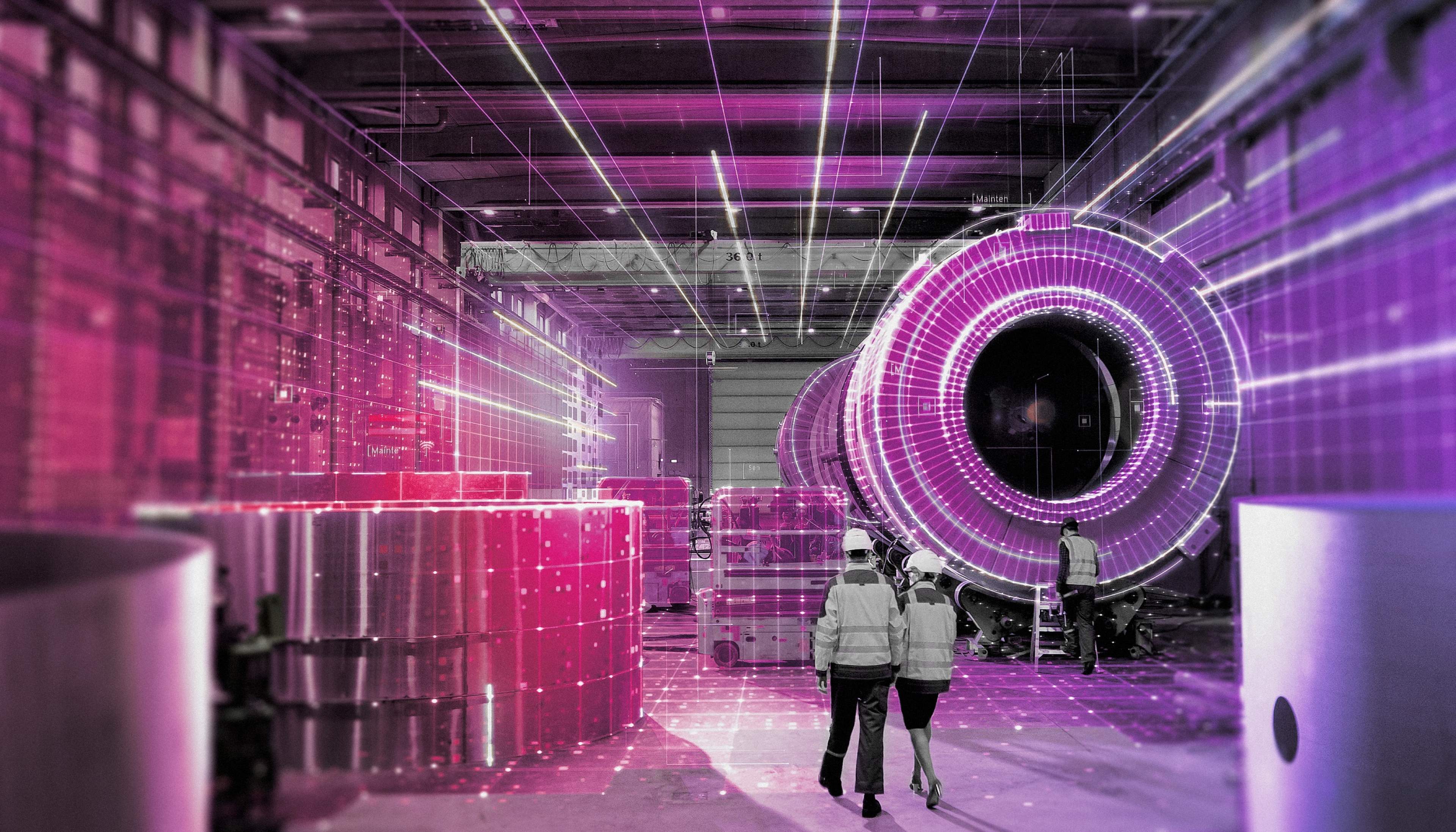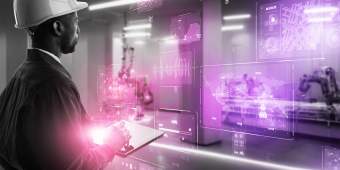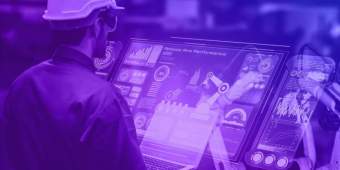Digital twins are one of the innovative solutions driving digital transformation in the manufacturing industry that you’ve no doubt heard about in recent months. They’re not brand-new technology, but as manufacturers contend with the ways data has become an increasingly important byproduct of their production process, many are looking to digital twin technology with new interest.
So what is all the hype about? What exactly can manufacturers do with digital twin systems? Plenty: used right, digital twins can ease the labor shortage, improve operational efficiency, help manufacturers outpace their competition, render complex decisions clearer and easier to make, and more.
In this article, the first in a two-part series, we’ll dig into some specific use cases digital twins have for manufacturers. First, though, let’s define what we mean by “digital twin.”
What is digital twin technology?
Let’s start with Wikipedia’s definition: “A digital twin is a digital model of an intended or actual real-world physical product, system, or process that serves as the effectively indistinguishable digital counterpart of it for practical purposes, such as simulation, integration, testing, monitoring, and maintenance.”
If you’ve ever called an Uber and then watched your phone as the image of your ride inched along a map of your location, you’ve interacted with a digital twin. The digital simulation communicates clearly where your ride is, how soon it will arrive, and whether it missed the one-way sign on the next street over.
If you grew up pre-smartphone, this application may seem unnecessary—why not just wait for your ride?
But given the real-world ways people use their phones, this virtual replica can improve safety: it also eliminates a rider’s need to text their driver to ask for updates, which reduces the chances that a driver is looking away from the road.
The key components here are the data sources (the car’s dynamic location and the static map data), the equipment for sending and receiving that data (driver and rider cell phones, cell tower infrastructure), and the interface that translates all that data to useful knowledge (the car-on-map visual).
Now let’s consider what digital twins might look like in a manufacturing context.
Digital twin manufacturing application 1: Get granular with predictive maintenance
Your car’s “check engine” light should appear on your dashboard well before the engine fails to start. Now imagine applying a digital twin solution with predictive maintenance sensors and software for every piece of equipment in your factory, with “check x” indicators for the parts most likely to shut down the production line. In industries like the automotive industry, where unplanned downtime can be especially costly, this approach can be transformative.
A digital twin of your physical assets ensures that your team performs maintenance exactly where it’s needed, when it’s needed, minimizing downtime and its related expenses.
To do this, the digital twin would need the following data:
Real-time data from IoT (internet of things) sensors on equipment
Historical data about leading indicators of likely breakdown
Organizational data about the cost of downtime of various equipment
With these inputs, the digital twin could leverage predictive analytics to set a prioritized task list to ensure maintenance work with the biggest potential impact gets prioritized. In addition to minimizing downtime, this digital twin solution could also prevent wasted work, optimizing the efficiency of your operations.
Digital twin manufacturing application 2: Make complex decisions faster
Let’s say you’re trying to decide whether to replace a piece of machinery with a new, more efficient model. This is a complex decision with lots of variables: support infrastructure needed for the new equipment; training costs for each machine; integration costs with the rest of your factory; the likelihood of downtime.
The use of digital twins, powered by algorithms and machine learning, could help you analyze cost savings and benefits over various timeframes, given various conditions. By leveraging artificial intelligence, digital twins can optimize workflows and offer data-driven insights, making complex decisions more manageable. The digital twin virtual model can’t actually make the decision for you, but it can render the decision much more concrete and offer scenarios for which each option makes sense.
Digital twin manufacturing application 3: Understand complex systems better
Supply chains are among the most complex systems manufacturers deal with, requiring input from multiple stakeholders and clear communication across the board. Digital twins, as a digital representation of supply chains, can help streamline decision making after inevitable disruptions.
Rather than manually crunching numbers and considering alternatives, digital twins operating within a virtual environment can automate the processing of various inputs to identify next-best paths after a disruption—or even prioritize alternative courses of action given various scenarios. This capability extends beyond supply chain management to support product design and other critical aspects of manufacturing. Which brings us to the next use case…
Digital twin manufacturing application 4: Simulate what-if scenarios
Cyber attacks. Supply chain disruptions. The emergence of a major unexpected competitor. Manufacturers have to be prepared for the unexpected, which means having plans in place for a variety of what-if scenarios.Digital twins enhance functionality by enabling manufacturers to simulate these scenarios with precision, supporting process optimization and boosting product quality. By modeling potential impacts throughout the product lifecycle, digital twins make contingency planning more concrete, giving manufacturers greater confidence that their plans will hold up under real-world conditions.
The key here is knowing which sources of data to feed a digital twin and what to model with the twin: supply chain or factory floor? Weather events or labor strikes? Combining your industry and business expertise with the expertise of a team skilled in developing and building digital twins can lead to stunning outcomes.
Digital twin manufacturing application 5: Optimize energy use
What are your current energy sustainability needs? How might you reduce energy inefficiencies? How might you transition to cleaner sources of energy? What if you could easily model multiple scenarios to reach 2030 targets? It’s possible with digital twins.
Again, the key is to input the right data and build a digital twin of the correct systems. When you do, you can consider multiple concrete paths to achieving energy use goals, then focus your resources on enacting the most viable.The full-organization ripple effect of digital twin technology
The challenges facing manufacturers today are daunting in part because they’re so complex. This is the beauty of digital twins: they make it possible to replicate complex systems and test alternative configurations in real time, significantly improving manufacturing operations.
If your organization is looking for innovative manufacturing solutions that address the interconnected systems—human, mechanical, digital, and otherwise—that power you day to day, you’ll be delighted by the potential of digital twins.
For a deeper understanding, explore a case study that demonstrates how digital twin technology has been successfully implemented, or set up an intro call to discuss what your organization needs to get started. Check out part two of this series for additional insights.




